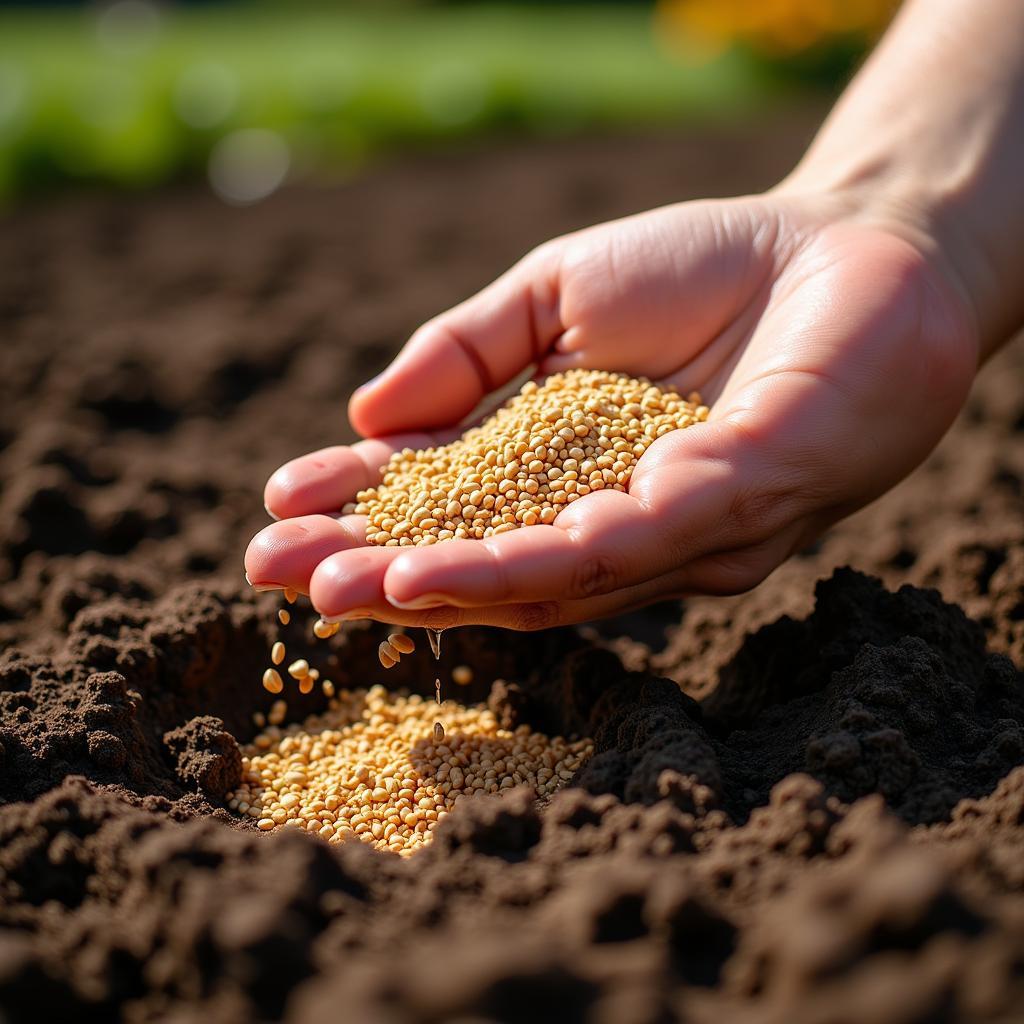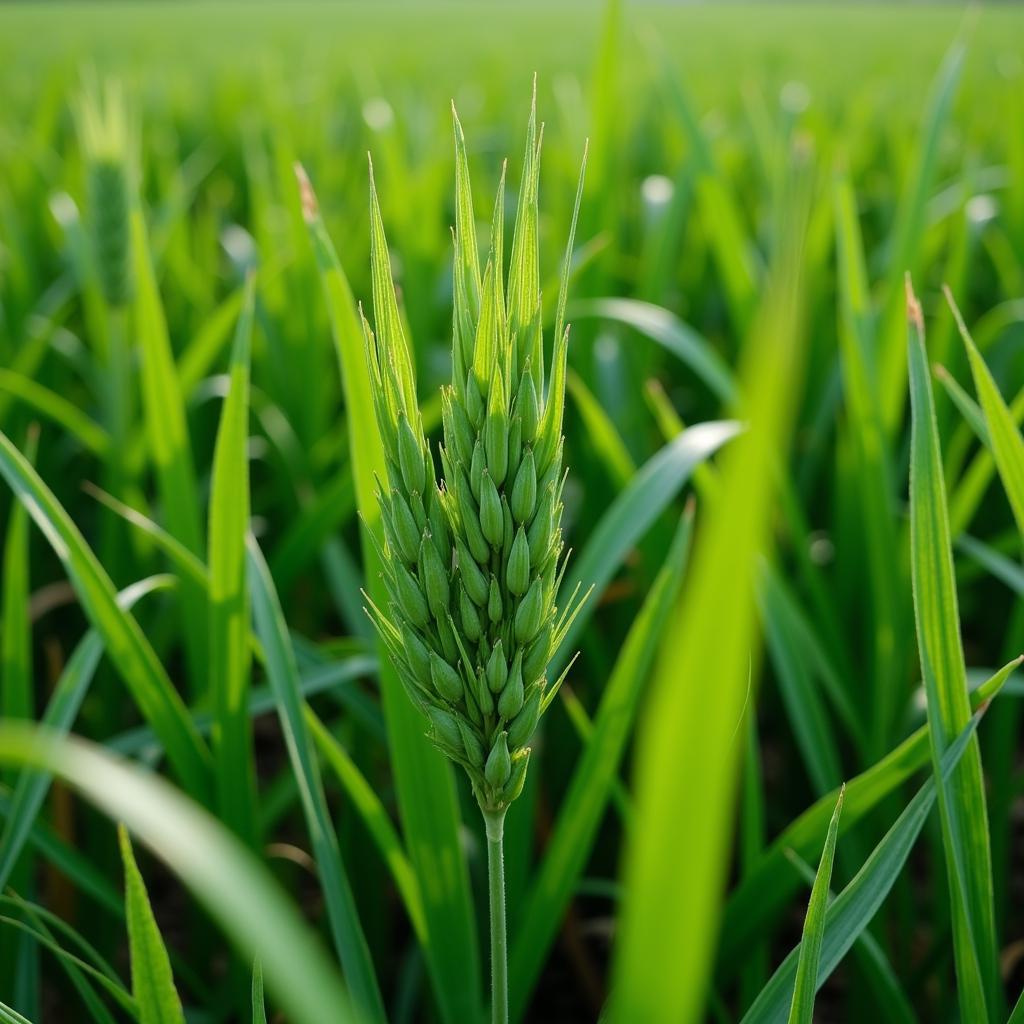Rye Food Plots are a popular choice for hunters looking to attract and sustain wildlife on their property. They offer a cost-effective and relatively easy way to supplement the natural forage available, ensuring a healthy and thriving deer population. Whether you’re a seasoned hunter or just starting, understanding the benefits and implementation of a rye food plot can significantly increase your hunting success. Dive in and discover how this versatile grain can transform your hunting grounds.
Why Choose a Rye Food Plot?
Rye is a cool-season annual cereal grain, making it an excellent choice for fall and winter food plots. Its hardiness allows it to thrive even in colder climates, providing a consistent food source when other vegetation is scarce. This is particularly beneficial for deer and other wildlife during the harsh winter months when finding adequate nutrition becomes a challenge. Besides its resilience, rye offers several other advantages for hunters. Its rapid growth and establishment mean you can see results quickly, and its affordability makes it a budget-friendly option for managing your land. Furthermore, rye can be easily mixed with other plants, creating diverse and nutritious food plots that attract a wider range of wildlife. A well-maintained rye food plot can be a game-changer for your hunting experience.
Looking to improve your winter hunting game? Check out our guide on winter rye food plot.
Rye is not only a valuable food source, but it also improves soil health. Its extensive root system helps prevent erosion and improves soil structure, leading to healthier and more productive land in the long run. This is a key benefit that often gets overlooked when considering food plot options.
Planting and Maintaining Your Rye Food Plot
Preparing the soil is the first crucial step in establishing a successful rye food plot. A soil test can help you determine the pH levels and nutrient deficiencies, allowing you to amend the soil accordingly. Next, till the soil to create a seedbed suitable for rye. Broadcasting or drilling are common seeding methods for rye. Broadcasting involves scattering the seeds evenly across the prepared area, while drilling places the seeds at a specific depth, ensuring optimal germination. Once sown, lightly rake or roll the area to cover the seeds.
 Planting Rye Seeds for a Food Plot
Planting Rye Seeds for a Food Plot
Watering is essential for germination, especially in drier climates. Regular monitoring of your rye food plot is essential for its success. Watch for weeds and pests that may compete with your rye. Implementing appropriate weed and pest control measures will ensure a thriving and productive food plot. Choosing the right variety of rye is also essential. Cereal rye is a particularly popular choice among hunters. Discover more about its benefits at cereal rye for food plots.
Rye Food Plot: A Hunter’s Best Friend
“A well-established rye food plot is like a magnet for deer,” says John Miller, a seasoned wildlife biologist with over 20 years of experience. “It provides a consistent and reliable food source, drawing deer in throughout the hunting season.” This consistent attraction can significantly improve your chances of a successful hunt.
“Don’t underestimate the importance of proper soil preparation,” advises Sarah Johnson, an experienced hunter and land manager. “A healthy soil is the foundation of a successful food plot.” Her insight highlights the critical role of soil health in ensuring a productive and attractive rye plot.
Choosing the Right Rye
Choosing the right type of rye is crucial for your food plot. Winter rye is a popular option for its cold tolerance and ability to provide forage during the late season. You can find more information about this specific variety at food plot winter rye. Consider your specific needs and climate when selecting the best rye variety for your hunting grounds.
Are you looking for alternatives to rye? Ryegrass can also be a beneficial addition to your food plot strategy. Explore the possibilities by visiting ryegrass food plot. For a more focused look at using rye specifically for food plots, visit food plot rye.
 A Healthy and Vibrant Rye Food Plot
A Healthy and Vibrant Rye Food Plot
In conclusion, a rye food plot is a valuable asset for any hunter seeking to enhance their hunting grounds and attract wildlife. Its hardiness, affordability, and nutritional value make it an excellent choice for providing a consistent food source, particularly during the challenging winter months. By understanding the planting and maintenance requirements, and choosing the right variety, you can maximize your hunting success with a thriving rye food plot.
FAQ
- When is the best time to plant rye for a food plot?
- What are the ideal soil conditions for growing rye?
- How much rye seed should I plant per acre?
- What are the common pests and diseases affecting rye food plots?
- How can I control weeds in my rye food plot?
- Can I mix rye with other plants in a food plot?
- What are the different varieties of rye suitable for food plots?
Common Scenarios and Questions
- Scenario: Deer aren’t attracted to my rye food plot. Possible solutions: Check for nearby food sources, ensure proper soil pH and nutrients, or try mixing with other attractants.
- Scenario: Rye isn’t growing well. Possible solutions: Check soil conditions, ensure adequate watering, or consider different rye varieties.
Further Exploration
Explore more related articles on our website, such as “Optimizing Your Winter Food Plot Strategy” and “Attracting Deer with Diverse Food Sources”.
Need help with your rye food plot? Contact us at Phone Number: 02437655121, Email: [email protected] Or visit us at: 3PGH+8R9, ĐT70A, thôn Trung, Bắc Từ Liêm, Hà Nội, Việt Nam. We have a 24/7 customer support team.